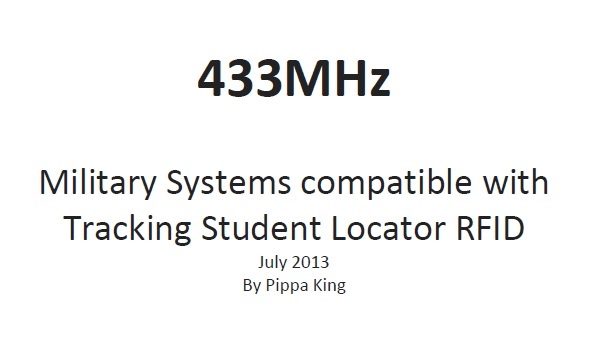RFID – Radio Frequency IDentification
RFID tagging is an ID system that uses small radio frequency identification devices for identification and tracking purposes. An RFID tagging system includes the tag itself, a read/write device, and a host system application for data collection, processing, and transmission. An RFID tag (sometimes called an RFID transponder) consists of a chip, some memory and an antenna. Some RFID systems will only work over a few inches or centimetres while others may work over 100 meters (300 feet) or more.
RFID tags that contain their own power source are known as active tags. Those without a power source are known as passive tags. A passive tag is briefly activated by the radio frequency scan of the reader. The electrical current is small, generally just enough for transmission of an ID number. Active tags have more memory and can be read at greater ranges.
Passive Tags -The reader activates the passive tag to operate. The electronics in a passive tag is usually simple and it doesn’t need to draw a lot of energy from the reader’s RF field to operate.
Active Tags – An active tag usually gets its power from an internal battery, so has enough energy available to enable it to transmit at the maximum allowable power. These allow active RFID tags to operate at a much greater range than passive tags and can allow transmissions of data.
In Active tags the higher the transmit power the greater is the RFID range. Transmit power is limited. Each country puts a limit on the transmit power that a reader or active tag is legally allowed to transmit and this is enforced by law.
Types of RFID and most common Radio Frequency bands for RFID. In general, the higher the frequency, the greater is the range.
- Low Frequency (LF) 125 to 134 KHz band
- High Frequency (HF) 13.56 MHz
- Ultra High Frequency (UHF) 433 MHZ and 860 to 956 MHz band
- Microwave Frequency 2.45 to 5.8 GHz band
- Ultra Wide Band (UWB) – transmission from an antenna for which the emitted signal bandwidth exceeds the lesser of 500 MHz or 20% of the center frequency
The above is a general description of RFID. Further reading can be found:
http://www.rfid-ready.com/rfid-basics/
http://en.wikipedia.org/wiki/Radio-frequency_identification
http://en.wikipedia.org/wiki/Ultra-widebandhttp://www.wireless-technology-advisor.com/rfid-range.html
http://ukrfid.com/rfid_systems/rfid_standards
http://www.wireless-technology-advisor.com/rfid-range.html
http://www.technovelgy.com/ct/technology-article.asp
http://www.ofcom.org.uk/
http://www.fcc.gov/
http://ukspec.tripod.com/spectrum.html#bmicro






